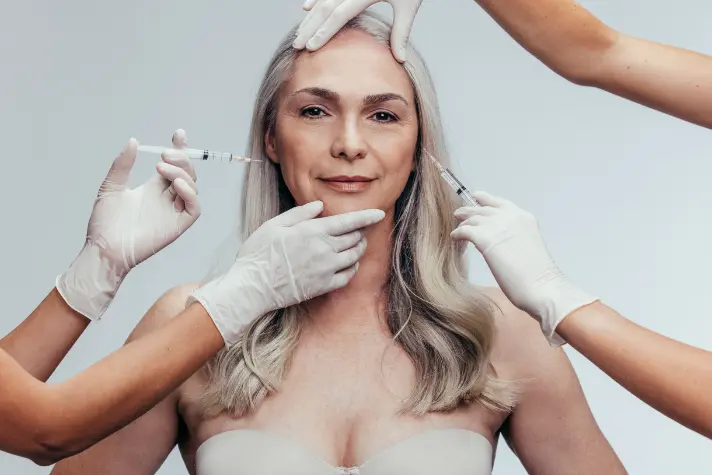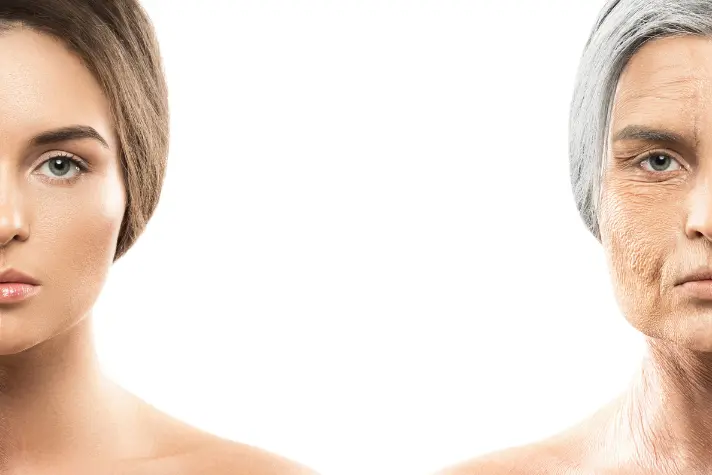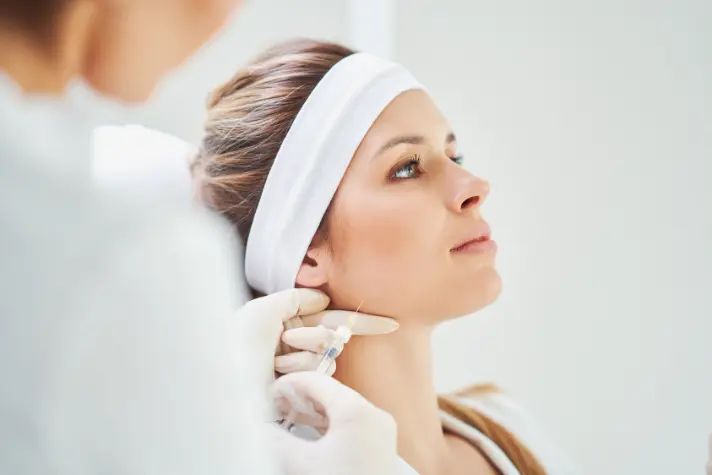
BOTOX injections are most commonly associated with people beginning to see more prominent signs of aging, usually in middle age.
However, BOTOX is not exclusively for this demographic. Beyond the several medical uses of BOTOX that can benefit all age groups, cosmetic BOTOX can also help prevent aging in younger people as well.
It is becoming common for patients to seek out BOTOX in their twenties—a procedure commonly called baby BOTOX or microtox.
BOTOX does not have a strict age limit. Other than being 18 to receive cosmetic BOTOX, if a patient has the dynamic wrinkles BOTOX can treat then the patient can often begin BOTOX treatment. Some medical uses for BOTOX are used in people under 18 as well as adults.
However, this is not done with cosmetic injections. Other than this understandable age restriction, adult patients with qualifying anatomy can start BOTOX at any age.
Recognizing Signs of Aging
While aging is said to become more noticeable in your late 30s and early 40s, there are often signs that pop up in your 20s. For example, frown lines and forehead lines may be visible when raising your brows or scowling. These wrinkles are called dynamic wrinkles which are not permanently seen on the face but can lead to static (permanent) wrinkles in the future.
The most common areas that younger patients receive BOTOX Bellevue:
- Forehead
- Eyebrows
- Glabella
- Crow’s feet (eye corners)
- Bunny lines (nose)
However, not all wrinkles will respond to BOTOX treatment or filler simply provides better results. For example, the nasolabial folds—or smile lines—can consist of both static and dynamic wrinkles. Dermal filler injections generally provide a better result, but BOTOX is sometimes used to help soften the wrinkles. It could be in combination with fillers or by itself.
Fillers also tend to be recommended for other treatment areas:
- Under eyes
- Temples
- Chin
- Cheeks
- Nose (for anything not related to bunny lines)
It is best to consult with a qualified plastic surgeon or cosmetic injector to determine whether BOTOX, fillers, or another treatment is best to achieve the results you want.
Factors Influencing Aging

The right time to start BOTOX treatment depends on several outside factors. Firstly, not all people are bothered by the initial signs of aging and would rather begin treatments when they worsen. This is a completely personal decision.
However, outside factors can help determine how quickly a person ages or sees aging appear on their skin.
Genetics—while a broad classification of many possible causes—gives some people the luck of not aging quickly. Though, good aging genetics cannot make up for sun-damaged or otherwise damaged skin. Ethnicity can play a small role in aging with people with lighter skin tones being more susceptible to visible sun damage.
However, people of all skin tones should regularly wear sunscreen and protect their skin from damaging UV rays.
Environmental factors also contribute to aging:
- Sun exposure/damage
- Air pollution
- Living in a very wet or dry environment
- The presence of certain elements in water
BOTOX for Younger Patients
Patients in their twenties may opt for BOTOX treatment as a preventative measure. Using fewer units than regular BOTOX doses and treating the earliest formations of dynamic wrinkles may help prevent the worsening and forming of wrinkles in the future. Patients may also choose to come in less than recommended for traditional BOTOX Injections.
Most people begin to see noticeable dynamic wrinkle formation around their mid-twenties. This is when preventative BOTOX is often commenced or recommended for patients wanting to prevent the maximum amount of aging.
Read also: 5 Medical Uses For Botox That Have Nothing To Do With Wrinkles
Determining Readiness for BOTOX

How do you know if you are ready to begin BOTOX for wrinkle prevention? There are a few ways to test whether BOTOX may benefit you at home.
First, look in the mirror at your expressionless face. For young patients, they will likely see no static wrinkles. Laugh lines can be present even from childhood and so are not always age-related. After understanding your baseline, raise and hold your eyebrows.
Do you see horizontal lines appear on your forehead? If you do, you may qualify for forehead Botox.
Next, scowl and bring your eyebrows together. Do you see one or two lines form between the brows? This may indicate that you would qualify for glabella BOTOX treatment.
Finally, squint your eyes. Do you see three small lines form at the corners of your eyes? If so, you may qualify for crow’s feet BOTOX.
At a consultation, your provider will likely run through these exercises and potentially a few more to evaluate your readiness for BOTOX.
There is more to consider when evaluating BOTOX readiness than your anatomy. Patients need to have a good understanding of the treatment and the temporary nature of the results. BOTOX is not a permanent wrinkle solution. It can help relax and weaken wrinkle-causing muscles which can have benefits in preventing future wrinkles, but the initial results are not permanent.
Have realistic expectations going into your first BOTOX appointment.
To sustain BOTOX results, patients will need to undergo repeated treatments. Usually, this is at intervals between twice and four times a year based on the patient’s goals. Patients can go as long as they want between treatments as long as they understand that their results will not be maintained through the additional waiting period.
BOTOX results last between two and four months on average. With repeated treatments, patients may see some longer-lasting effects such as the prevention of worsening wrinkles, but BOTOX is not a permanent treatment.
Seeking Professional Guidance
Consulting with a qualified facial plastic surgeon or their team is important to get the best possible results. As facial experts, they know the precise way to inject and dose BOTOX in people of all ages to see the best results based on the patient’s goals.
To find a reputable and experienced provider for BOTOX treatments in your area, review various review platforms such as Google, RealSelf, and Yelp.
Also, many providers will note any specialties they may have when it comes to BOTOX or other facial treatments. If you are looking for something specific such as baby BOTOX, specifically seek it out online in your area to see who specifically mentions that they offer it.
Conclusion
BOTOX can benefit adult patients of all ages. Ultimately, the way to age gracefully is prevention in the form of good skincare, sun protection, and conservative treatments such as BOTOX and professional esthetic procedures.
When seeking BOTOX, approach it with realistic expectations and with the goal of aging well, not achieving immediate results. Seek out the guidance of qualified and experienced professionals.
About The Author:
Stacey Smith is a freelance health writer. She is passionate about writing about women’s health, dental health, diabetes, endocrinology, and nutrition and provides in-depth features on the latest in health news for medical clinics and health magazines.



![[Infographic] Exploring the Therapeutic Uses of Botox Exploring the Therapeutic Uses of Botox](https://www.safeandhealthylife.com/wp-content/uploads/2024/04/Therapeutic-Uses-of-Botox-150x150.webp)
